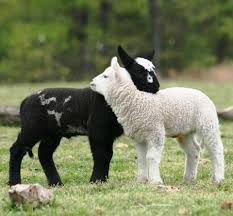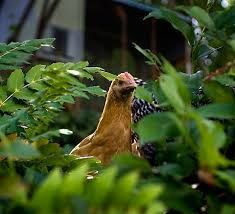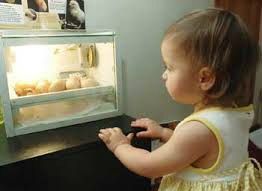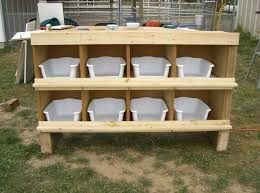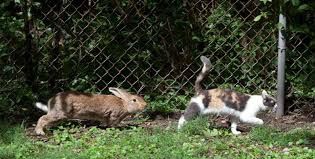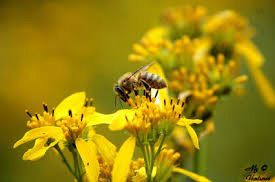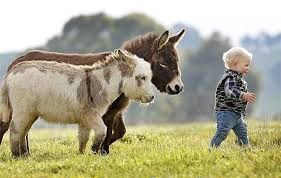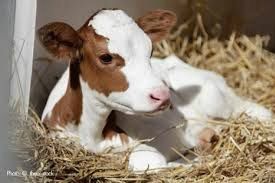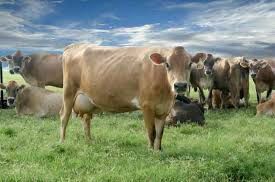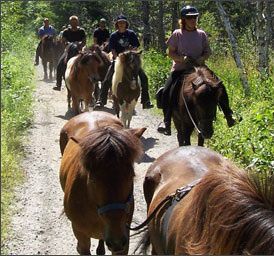Before We Begin This Reading List
Here is an important note regarding Animal Husbandry:
Do Not Keep Just One Kind of Animal.
"Virtually every animal is happiest when kept with others of its species. A single cow or horse is sad, but it learns to cope. Other species such as sheep, goats, and llamas need companionship, preferably others of their kind. Sheep especially, being a flocking species, will fret and stress unless provided with a pal or two. Please be kind: Never keep any animal all by itself."
(Sue Weaver, quoted above, is the author of The Donkey Companion and dozens of magazine articles on animal raising and husbandry. She is a contributing editor for Hobby Farms magazine and lives in the southern Ozark Mountains.)
The Backyard Homestead Guide to Raising Farm Animals
Looks like this one found her way out of the chicken yard!
If you want to have some lawn, then do not let chickens run loose in your yard. They will peck away at your grass until there is none left!
Edited by Gail Damerow
Table of Contents
Chapter 1: Introducing Backyard Farm Animals
Chapter 2: How Many Animals Can You Keep?
Chapter 3: Chickens
Chapter 4: Turkeys
Chapter 5: Ducks and Geese
Chapter 6: Rabbits
Chapter 7: Honey Bees
Chapter 8: Goats
Chapter 9: Sheep
Chapter 10: Pigs
Chapter 11: Dairy Cows and Beef Cattle
Hatching & Brooding Your Own Chicks
Much can be learned now, at home, such as watching chicks hatch.
Hatching from an egg is a delicate process, and it is important not to try to "help", as this usually results in death and much blood. Let the chick or duckling work its way out. That is the best way.
by Gail Damerow
Table of Contents
Chapter 1: Acquiring Your First Chicks
Chapter 2: Setting Up Your Brooder
Chapter 3: Managing Water, Feed, and Bedding
Chapter 4: What to Expect as They Grow
Chapter 5: Hatching Health Issues
Chapter 6: The Broody Hen
Chapter 7: Selecting an Incubator
Chapter 8: Eggs for Hatching
Chapter 9: Operating an Incubator
Chapter 10: What Went Wrong?
Chapter 11: Hatchling Identification
Chicken Coops: 45 Building Ideas for Housing Your Flock
These plastic stacking bins can be used for each individual hen in the coop. Washing these up will be easy!
by Judy Pangman
Table of Contents
Part 1: Providing Shelter: The Basics
Part 2: Coops for the City
Part 3: Coops for Small Farms
Part 4: Cool Coops
Your Rabbit: A Kid's Guide to Raising and Showing
Rabbits can be a lot of work, so begin with four.
Get one young buck, one mature doe (just under 2 years old) who has already had babies, and two young does.
Keep the buck in a separate cage and only put him with the females when it is time to mate them.
His cage can be next to the does so that he is happy.
by Nancy Searle
Table of Contents
Chapter 1: Choosing Your Breed of Rabbit
Chapter 2: Choosing Your Rabbit
Chapter 3: Handling Your Rabbit
Chapter 4: Rabbit Housing
Chapter 5: Feeding Your Rabbit
Chapter 6: Taking Care of Your Rabbit's Health
Chapter 7: Breeding, Birth, and Care of Newborns
Chapter 8: Showing Your Rabbit
Chapter 9: Marketing Your Rabbit
Chapter 10: Managing Your Rabbitry
Chapter 11: Activities for Young Rabbit Owners
Storey's Guide to Keeping Honey Bees
Bees pollinate plants, which means they help plants to grow flowers. Fruits and certain vegetables grow out of these flowers. So flower production is NECESSARY in order to obtain food! Plus, bees make honey and wax. They're pretty busy little guys!
Plan on having a hive or two (depending on the size of your property). You will have a bountiful crop of fruits and vegetables!
by Malcolm T. Sanford & Richard E. Bonney
Table of Contents
Chapter 1: Beginning Beekeeping
Chapter 2: Origin and History of Beekeeping
Chapter 3: A Bee's Life
Chapter 4: Choosing Hive Location
Chapter 5: Getting Equipped
Chapter 6: Enter the Bees
Chapter 7: Managing Honey Bee Colonies
Chapter 8: Taking the Crop
Chapter 9: Pollination
Chapter10: Diseases and Pests of the Honey Bee
Storey's Guide to Raising Miniature Livestock
Reasons to choose miniature animals:
-Minis need less land.
-Feed and housing costs are much less.
-They are easier and safer to handle (hoof-trimming, shearing, milking).
-Minis are profitable! There is a growing market for the small animals you breed, if your heart can bear to part with them!
by Sue Weaver
Table of Contents
Chapter 1: Before You Begin
Chapter 2: Which Species?
Chapter 3: Getting Started: Education, Vets, and Where to Buy
Chapter 4: Selecting Miniature Livestock
Chapter 5: Livestock Guardians
Chapter 6: Facilities and Fences
Chapter 7: Feeding
Chapter 8: Health
Chapter 9: Identification
Chapter 10: Transportation
Chapter 11: Breeding
Chapter 12: Got Milk?
Chapter 13: The Business End
Chapter 14: Miniature Cattle
Chapter 15: Miniature Equines
Chapter 16: Miniature Goats
Chapter 17: Miniature Llamas
Chapter 18: Miniature Pigs
Chapter 19: Miniature Sheep
Your Calf: A Kid's Guide to Raising and Showing Beef and Dairy Calves
After the 3 Days of Darkness, it will be up to the survivors to rescue farm animals so that they do not die of starvation.
by Heather Smith Thomas
Table of Contents
Chapter 1: Finances
Chapter 2: Housing, Facilities, and Equipment
Chapter 3: Nutrition
Chapter 4: Keeping Your Calf Healthy
Chapter 5: Choosing a Beef Breed
Chapter 6: Selecting a Beef Calf and Bringing Him Home
Chapter 7: Caring for Your New Beef Calf
Chapter 8: Feeding Your Beef Calf
Chapter 9: Training, Fitting, and Showing Your Beef Calf
Chapter 10: Raising a Beef Heifer
Chapter 11: Breeding and Calving
Chapter 12: Managing Your Own Herd
Chapter 13: Selecting and Buying a Dairy Calf
Chapter 14: Care of the Young Dairy Calf
Chapter 15: Weaning Through Yearling Year
Chapter 16: Breeding and Calving the Dairy Heifer
Chapter 17: Care of the Dairy Cow
The Family Cow
There are certain facts about dairy cows we need to know:
- To begin producing milk and to keep producing milk, an animal must periodically give birth.
-Some animals will continue to give milk from 2 to 3 years after they have given birth.
-Dairy animals must be milked EVERY day at the SAME TIME(S) every day, in the same place, preferably by the same milker; animals never take long weekends or sleep in.
by Dirk Van Loon
Table of Contents
Chapter 1: How Now, (One Brown Cow)?
Chapter 2: A History of Cattle
Chapter 3: Behaving Herself
Chapter 4: Buying a Cow
Chapter 5: Handling and Grooming Cows
Chapter 6: Buildings, Staking, Fencing
Chapter 7: The Plants Cows Eat
Chapter 8: Taking It All In
Chapter 9: A Choice of Foods
Chapter 10: Measuring Feed Ingredients
Chapter 11: Grass/Hay and Concentrates -- A Basic Diet
Chapter 12: Shaving the Food Budget
Chapter 13: Milk and Milking
Chapter 14: Milk and the Home Dairy
Chapter 15: Breeding and Heat Periods
Chapter 16: Calving and Calf Feed --- Care of Young Stock
Chapter 17: Health
Chapter 18: Keeping the Land
Chapter 19: Making and Storing Hay and Roots
Storey's Guide to Raising Horses
No gas? No electricity? No problem!
by Heather Smith Thomas
Table of Contents
Chapter 1: Facilities
Chapter 2: Feeding and Nutrition
Chapter 3: Seasonal Care
Chapter 4: Foot Care
Chapter 5: Horse Handling
Chapter 6: Reading the Signs of Health and Sickness
Chapter 7: Disease Prevention
Chapter 8: Infectious Diseases of Horses
Chapter 9: Non-Infectious Diseases of Horses
Chapter 10: Parasites
Chapter 11: Toxic Plants and Poisons
Chapter 12: Skin Problems
Chapter 13: Dental Care and Mouth Problems
Chapter 14: Eyes and Ears
Chapter 15: Digestive Tract Problems and Colic
Chapter 16: First Aid and Medical Treatment
Chapter 17: Selecting Breeding Stock
Chapter 18: Genetics
Chapter 19: Keeping a Stallion
Chapter 20: Breeding the Mare
Chapter 21: Care of the Broodmare
Chapter 22: Foaling
Chapter 23: Care of the Newborn Foal
Chapter 24: Care of the Young Horse
